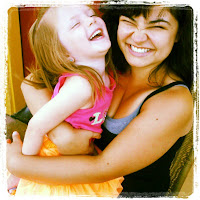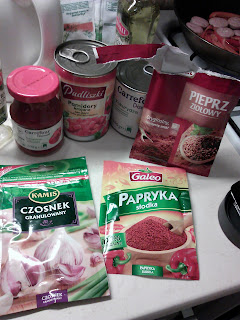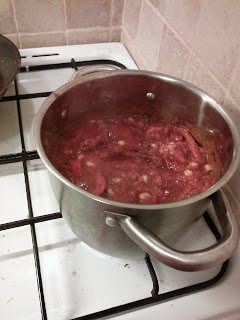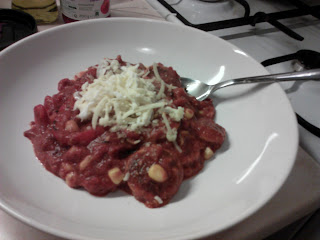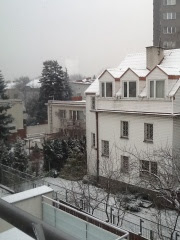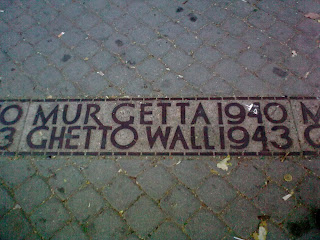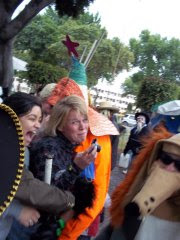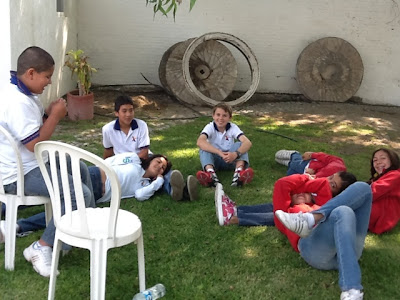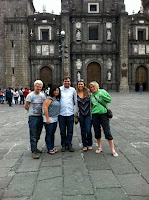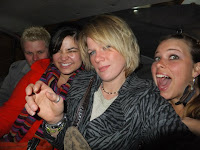 |
| My first proper glimpse of Old Town |
Oh bureaucracy…. At one point in my life I aspired to be a bureaucrat. I realize that this is an odd dream; people
do not dream of being bureaucrats.
People dream of being actors or athletes or great statesmen. No one dreams of being one of the unseen “little
people” who work to aid and support statesmen and politicians as they work to
change the world. For a semester at the
end of my junior year of college, though, I believed that I was made to be a
bureaucrat, and a damned good one at that.
I have no real reason to offer for this aspiration besides the fact that
for most of my life I have known that I am an excellent assistant. I can take the lead when necessary, but in
general I prefer to let others do so, acting as a first mate to someone else’s
captain whenever possible. As such, I
believed that as a bureaucrat I could happily and effectively assist great
people as they worked to mold and shape our world into a better one.
I have
since outgrown this aspiration. Since my
junior year I have desired to be a lawyer, a pub/restaurant owner, a rockstar,
a college professor and historian, a rockstar historian, an aesthetician, and a
teacher, to name a few. I have flirted
with the idea of working as an assistant, and many of the professions I’ve
looked at are in the government and could be said to be within the realms of
bureaucracy, but I no longer approach the idea with the same sort of starry
eyed enthusiasm as I did at the age of 20.
No, on
second thought that isn’t true. When I
look at jobs working within for and with the U.S. government, jobs that would
be considered bureaucratic, I still tend to tint the idea with a fair amount of
rosy idealism. I still cannot help but
thrill at the idea of the U.S. government as a whole, and the idea of working
for it, even as a paper pusher or severe matron with a modicum of authority and
the power to wield a really cool stamp, still appeals to me in some sick, sick
way. And yes, I’m aware I just said
that.
 |
It delights me that even the lampposts are
charming with their swoops and flourishes |
Bureaucracy,
though, has taken on a new meaning for me.
Since coming to Warsaw I have had to encounter oh so many components of Polish
bureaucracy as we seek to legalize my prolonged presence in Poland. A regular tourist visa, granted to the
average tourist entering Poland, lasts for three months; my contract, though,
is for the period of one year. For EU
citizens, like my Irish roommate, visas are not an issue. For me, however, it has been over a month of
jumping through hoops and signing my name so many times I’ve almost forgotten
where to make loops and where to make swoops.
As a
certified ESL instructor, I am not required to have a work visa in Poland,
which saved me from making a hasty trip to San Francisco to obtain a visa. Instead, my employers and I have to file page
after page of documents verifying everything from my official place of
residence and my work contract to my passport’s travel details and a copy of my
boarding pass. I’ve signed at least six
copies of my contract (in Polish and in English), submitted my passport for
copying countless times, and signed documents verifying that yes, I have an
apartment, yes, I have a job and health insurance, and no, I won’t pay taxes
here. Together with my employers I have
filled out almost 80 pages of documents detailing my physical description, my
personal and family background, and my reason for wanting to remain in Poland
for longer than three months. I am
exhausted simply thinking about all the documents we have assembled. Every time someone from the office approaches
me with another paper to sign, we both laugh and sigh at this latest hoop
through which to jump, and inevitably someone says, “Ohhhh bureaucracy.” But finally, on Wednesday, I went with our
administrator Sylwia to file my paperwork.
The
first office we visited was located within the “Old Town.” I should note here that while it is called
Old Town, this beautiful area of Warsaw is not actually old. Like so much of the city, the Old Town was
destroyed during the Second World War and has been rebuilt and reproduced in an
effort to reclaim some of Warsaw’s cultural history. Since coming to Warsaw I have been eager to
visit the Old Town and see its sights, whose bronze-colored steeples have been
calling to me for a month now.
I felt
like a small child as we drove over beautifully cobbled streets, with my face
pressed against the window and gasping with delight over the lovely
architecture of these official buildings.
I’ve stated several times that merely being in the presence of old
buildings gives me a contact high, and although these buildings aren’t
technically old, they still thrilled me to my core. As our car slowly passed a vibrant yellow
office with cherubs and statues standing at attention, I even managed to forget
my anxiety over my upcoming interview with the bureaucrats who would decide my
fate in Poland.
My trip
to Old Town was remarkably brief, however.
Immediately upon entering the correct office we were informed by an
uninspiring little bureaucrat that it was Wednesday and this office did not
accept paperwork on Wednesdays.
Oh bureaucracy. It would have been so much more palatable had
he had a stamp that proclaimed with red ink that he would not accept my claim
on a Wednesday—I feel that if one must be an authoritative and disliked (at
least by me) bureaucrat, one must at least wield a stamp with red ink. Or be garbed in a white shirt and branded in
red tape with a scarlet B for Bureaucrat.
 |
another steeple peeking through the leaves,
captured on my phone just as we drove away
from Old Town |
We
subsequently took my paperwork to a second office (which did accept paperwork
on Wednesdays, though I failed to discover whether it accepts paperwork on the
other days of the week, perhaps it rejects paperwork on Tuesdays, or
Thursdays). At this second office we had
a rather lengthy interview with a terse bureaucrat who reviewed my documents
closely. She told us that the nearly 40
pages of documents I had filled out had been done incorrectly—completed in
English when they must be completed in Polish; we also needed more information
about me and my travels, much more information.
She, too, sadly failed to possess an official stamp with which to reject
my paperwork. As she held the door open
for me to pass out of the bureaucrat’s office, Sylwia smiled tiredly and
sighed, “Oh bureaucracy.”
At least
I can cling to the memory of that beautiful street in Old Town as it opened up
before me, revealing beautiful European churches with their spires and steeples, and buildings of state,
accented perfectly by the early colors of autumn.

